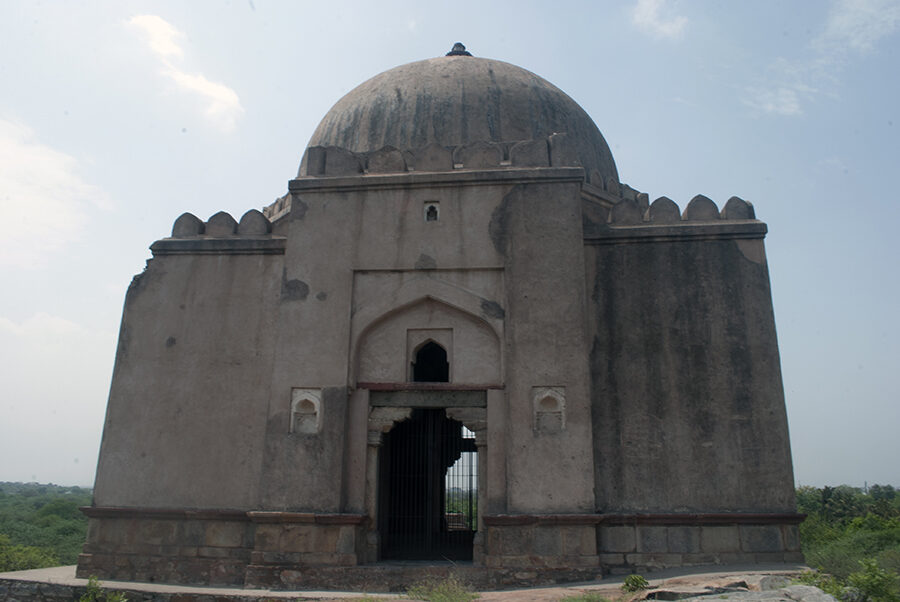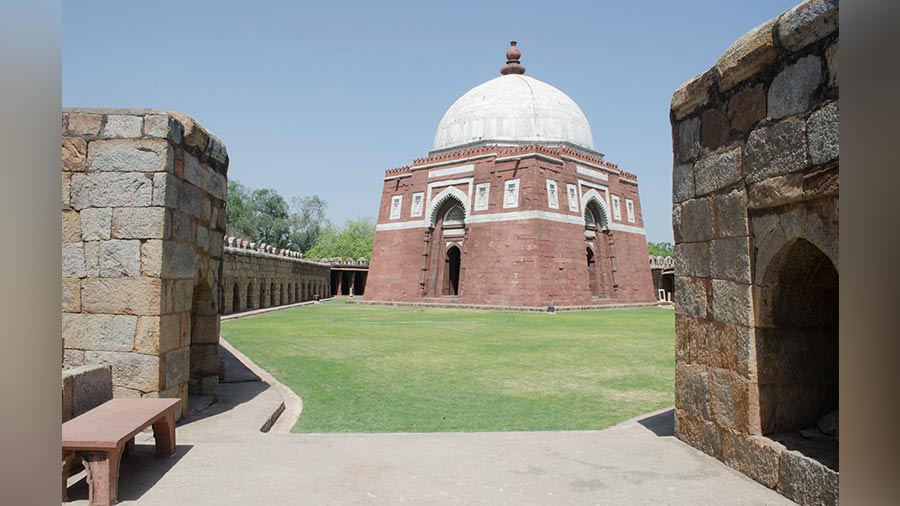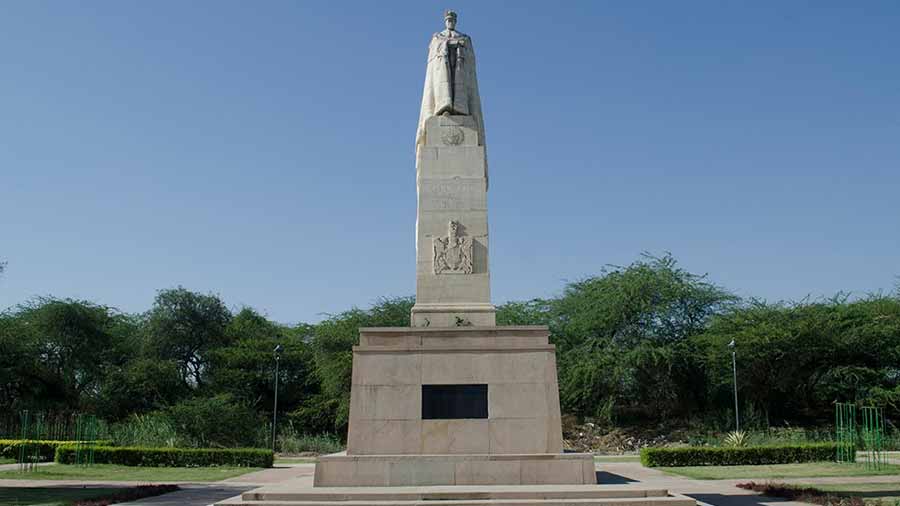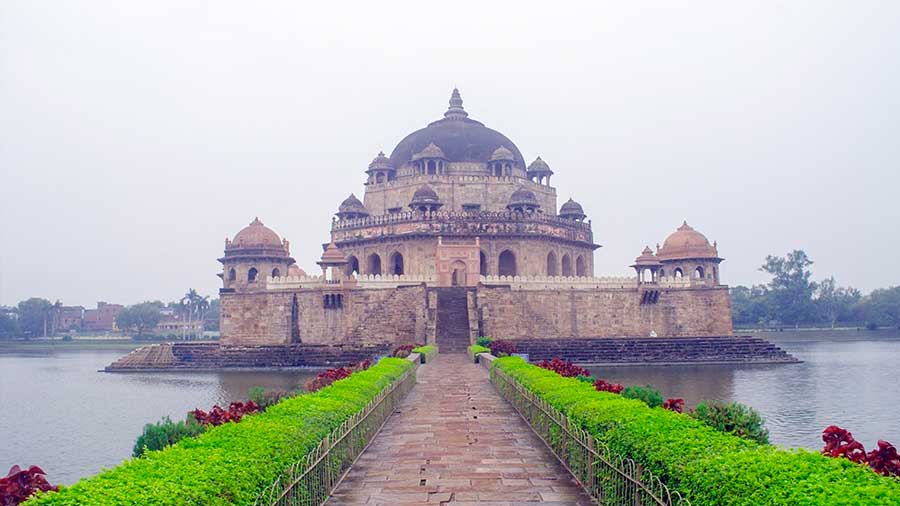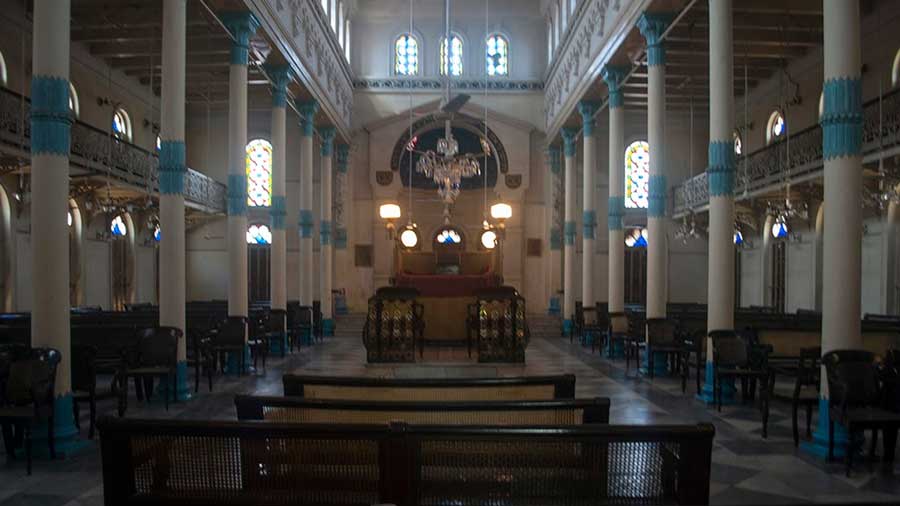The small domed structure stands on a rocky outcrop overlooking the Mehrauli – Badarpur road. The structure dates back to early 17th century and houses the mortal remains of a Mughal army general Azim Khan, who later turned into a spiritual guru.
As a Mughal general
Nothing much is known about Azim Khan. He was one of the trusted generals of Akbar. He had led many military campaigns and helped in the increase of the Mughal empire. Sadly, there are no proper historical records of the campaign led by Azim Khan. He was awarded the title ‘Akbar’ (meaning magnificent) by Akbar himself. Despite being an efficient general, he was moved by the horrors of war. Later in life, he was inspired by the teachings of Sufi saint Hazarat Nizamuddin and gave up the path of war and violence.
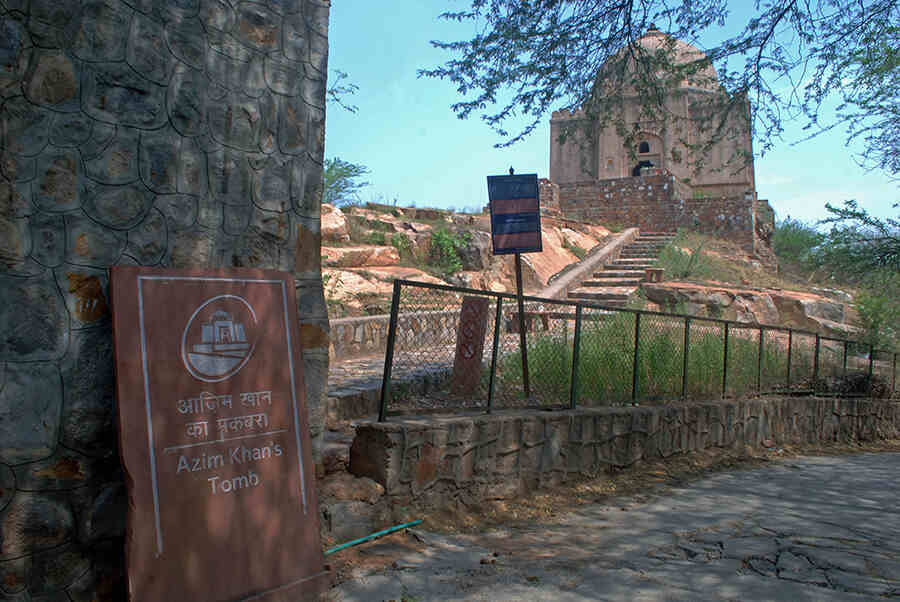
Entrance to Azim Khan’s Tomb complex
A general-turned-mystic
According to legend, Hazarat Nizamuddin appeared in the dream of Azim Khan and advised him to follow the path of spirituality. Inspired by the 14th century Sufi saint, Azim Khan gave up the life of a soldier and started a life of a spiritual mystic. He also started advising people about spirituality and soon became a popular spiritual teacher. This attracted a large number of people, from far and wide. They flocked around him seeking spiritual advice. This disturbed his spiritual peace and he looked for an isolated place.
Residence-turned-tomb
His search of isolation led to the construction of a domed structure atop a rocky outcrop in Mehrauli region of south Delhi. The rocky outcrop had sheer vertical walls preventing easy access. The structure served as the residence of Azim Khan. Rock climbing provided the only access to the tomb and no wonder Azim Khan and his few followers mastered the skill of rock climbing. After Azim Khan’s death, he was laid to rest within the structure. Sadly, the exact date of his death is not known but it is likely to be somewhere in the early part of 17th century.
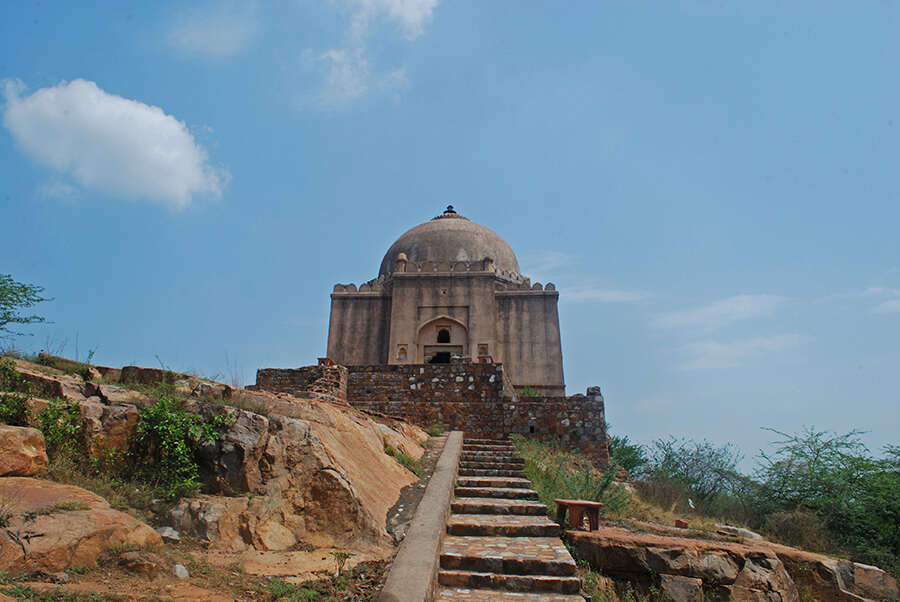
Stairs leading to Azim Khan’s tomb
Pleasure house of the British
Centuries later, during the British rule, several of the monuments of Mehrauli were converted into outhouses for British officers. Azim Khan’s tomb was no exception and it was converted into a late-night partying house. The British soldiers tested their physical strength and their climbing skills by scaling the near vertical walls of the hillock for the late-night parties. They took pride in displaying their climbing and physical skills to their friends and considered scaling the hill’s sheer walls a mark of their strength and manhood. They would come here in groups, often with mistresses, bring along booze and servants to make merry.
Post-Independence neglect
Most of the sultanate and Mughal period tombs were looked after by the family members of the owner. Azim Khan’s tomb was no exception. In 1947, the Independence came with the Partition and the keepers of Azim Khan’s tomb left for Pakistan. Ever since, the tomb has been left in utter neglect. It was only during beautification drive for an international event that the 400-year-old tomb of Delhi got a facelift.
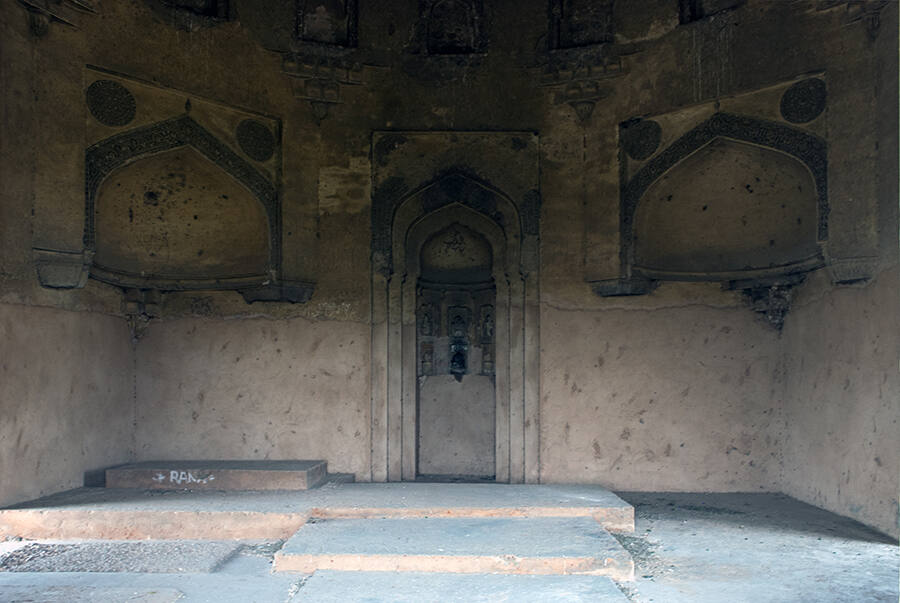
The interiors of Azim Khan’s tomb
A new lease of life
In 2010, the Commonwealth Games were held in Delhi and the entire city got a facelift. These included restorations of many medieval tombs including Azim Khan’s tomb. The tomb was restored and a staircase was built to providing easy access to the tomb. So after 400 years, Azim Khan tomb became accessible to people, who had not mastered the skill of rock climbing.
Azim Khan’s tomb today
Although the tomb has been made accessible for almost a decade-and-a-half, it is seldom visited by tourists. It is located behind the Jain pilgrimage of Ahimsa Sthal. The approach road runs along the boundary of the Jain pilgrimage. The narrow road meanders past some ruined structures, covered with thick vegetation and finally reaches the gate of the Azim Khan’s tomb complex.
A staircase leads to the top of the rocky outcrop housing the tomb. In front of the tomb there are a few scattered graves. The dome of the tomb is crowned with inverted lotus finial. It has entrances on three sides, the western side being the sole exception. The inner surface of the west side has a mihrab, allowing the tomb to double up as a mosque.
The three entrances are locked, making entry inside the tomb impossible. The greatest part of the Azim Khan’s Tomb is its commendable view of the Mehrauli region. It also provides a great bird’s-eye view of Delhi’s green spaces, stretching all the way to Qutub Minar and beyond.
Quick info
· Officially open from sunrise to sunset. In reality (depending on the caretaker), from 8am to 5pm
· No tickets
· Photography allowed

